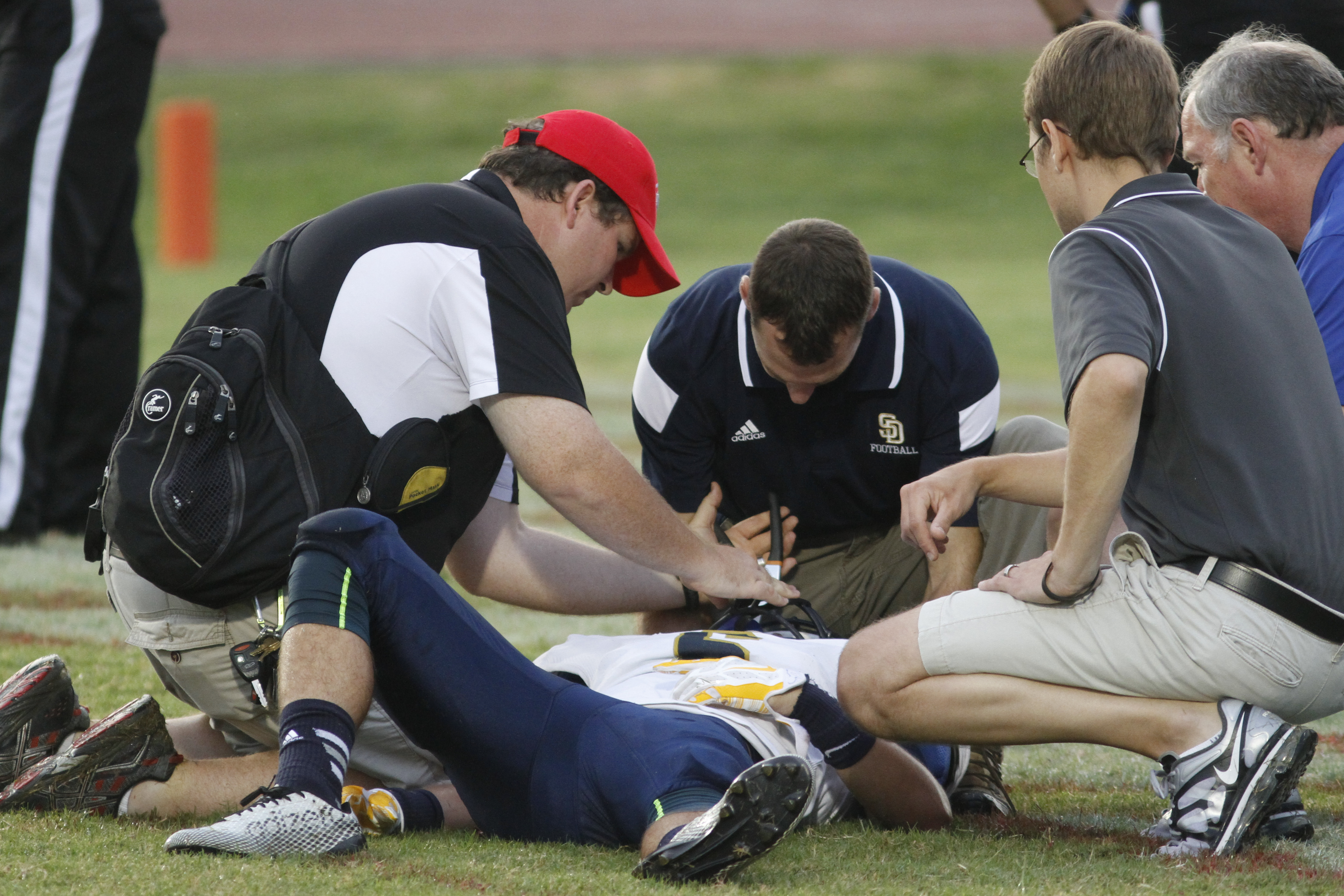Earlier this football season a Soddy-Daisy player was injured seriously enough that the school's athletic trainers and the first responders did not want to move him. They instead wanted to transport him to the hospital for immediate evaluation.
They and the players, coaches, fans and injured player, Jacob Lemons, could only wait for an ambulance to arrive.
Lemons is back on the field now, according to Steve Henry, the school's athletic director and one of its assistant principals, yet the dilemma that night presented questions for which there are few answers.
With no help from within the school system, Hamilton County athletic departments are left to their own devices in having medical resources available. Some have trainers provided, some foot the bill, others depend on volunteer EMTs and other first responders and some feel forced into a wing-and-a-prayer philosophy.
While coaches are required to be trained in CPR, concussion recognition and first-aid -- they are, after all, trained as educators -- having an ambulance on site could be very important, Tyner coach Wayne Turner noted, but that probably would burst his already strained budget.
"Such a service would come out of the football budget, and we do not have the resources to finance it," he said. "There is a fire hall about 10 blocks from us that we call if there is an emergency."
Times have changed, reminded Red Bank assistant principal Patty Lane, a former coach.
"Years ago when we had a healthy county coaching association, I believe it was just an understanding [the] home team would try to have one, but there is no official policy to my knowledge," she said.
"Sure, you'd like to have an ambulance at every game, but is it realistic?" said Ooltewah assistant principal Jesse Nayadley, who serves as the school's athletic director. "You try to have the best environment you can create. When you have first responders and trainers, you feel like you're doing all that you can do."
Henry agreed that lawsuits stemming from injury situations are not out of the realm of possibility.
"You do what you can so you're not negligent," he said. "We don't have ambulances sitting at the games. We have to call. If we don't have them, I doubt that anybody in the county does."
Private schools including Baylor, Boyd-Buchanan, Chattanooga Christian, McCallie and Notre Dame pay for ambulances to be at their games.
"I believe the average cost is $200-$250 [per night], and many schools absorb [the cost] from their football funding," Notre Dame athletic director Matt Pobieglo said. "Having an ambulance service is crucial -- being able to provide emergency care should a problem arise.
"It is peace of mind knowing that should something happen to a student-athlete or spectator that we are covered. I hope that we never use the service, but it is taking a precautionary step for care and alleviates potential liability issues."
Lookout Valley was one of those wing-and-a-prayer programs for several years but found the money -- $5,000 -- to fund the expense of a trainer.
"Some schools pay for them, some don't or others just can't afford it," Yellow Jackets coach Tony Webb said. "The bigger schools have more participants and sometimes don't have to pay. It's different for each school."
In a game at Lookout Valley earlier this season, a Chattanooga Christian player suffered a head injury. Both schools had trainers, but they decided an ambulance was needed to transport the player to the hospital. Webb said that while it would have been nice to have an ambulance on site, one was at the field is about 10 minutes.
Smaller school systems in outlying areas almost always have an ambulance along with trainers and EMTs.
Grundy County has at least one ambulance and sometimes two on hand. South Pittsburg can call an ambulance via numerous security personnel. Bledsoe County has local EMS and an ambulance present.
"That's part of the support from the community," Bledsoe coach Jason Reel said. "The people who are part of this service enjoy the opportunity to watch the game in hopes they aren't needed. If an emergency arises in the county that needs multiple ambulances, then of course they would leave us and respond."
The EMTs at Grundy County are a crew stationed less than five minutes from the school.
"They come to the game free of charge to the school," Grundy coach Nick Bryant said. "They're very active in the school by presenting professional development programs to coaches regarding injuries, policy and procedures. It is extremely important and we are blessed with a great EMT service."
Bradley County and McMinn County schools, Meigs County, Rhea County and Polk County all have ambulances at their games.
To the best of his knowledge, there are no mandatory guidelines for Alabama schools, Scottsboro athletic director Brad Dudley said. The same is true in Georgia, but Dudley, whose school has an ambulance on site at every home game, and others have applied common sense.
"We have a certified trainer on site for all our athletics at SHS. We also have team doctors and EMTs and an ambulance at every home game," Dudley said.
Cleveland is another that always has an ambulance and crew on hand.
"Our service works with the school to always provide one, and we also have a plan in place if the one at our game is called away since [there is] a hospital nearby," Blue Raiders coach Ron Crawford said. "I have seen a fan have a heart attack, severe leg injuries that needed emergency treatment and a couple of [players with] neck injuries that were transported -- not a lot in 30 years, but just the security of knowing [an ambulance] is available and having one my entire career has been an asset."
Contact Ward Gossett at wgossett@timesfreepress.com or 423-886-4765. Follow him at Twitter.com/wardgossett.

